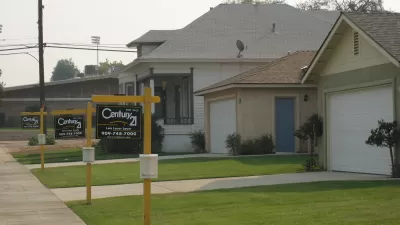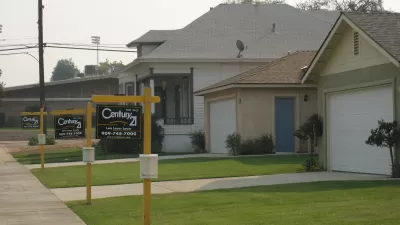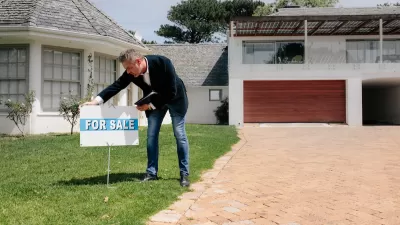For an "entitled generation," Millennials feel less and less entitled to one of the hallmarks of the American Dream: homeownership. But that doesn't mean the goal is permanently out of reach.

Kelsey Ramirez reports on data from Trulia showing diminished expectations from the American public when it comes to owning a home. This tracks with a 50-year low in national homeownership in mid-2016, a metric that has been declining since around 2003.
While most people still count homeownership as part of the "American Dream," the numbers are slipping. "Trulia’s end of the year survey shows the share of Americans who say homeownership is part of the American dream dropped for the first time in five years from 75% last year to 72%."
Among young adults, the drop-off is steeper. "This drop was even more extreme among Millennials. While in 2015 80% of Millennials said buying a home was part of the American dream, the survey at the end of 2016 showed that number dropped to 72%, now even with everyone else."
According to Trulia Chief Economist Ralph McLaughlin, "If the for-sale housing market is to continue building steam in the years ahead, [Millennials] will need to transition into homeownership in order to support the resale of homes by their older counterparts." In the short run, this may not be happening. But over time, McLaughlin believes the transition will succeed.
FULL STORY: Trulia reports Millennials think housing no longer part of American Dream

Study: Maui’s Plan to Convert Vacation Rentals to Long-Term Housing Could Cause Nearly $1 Billion Economic Loss
The plan would reduce visitor accommodation by 25,% resulting in 1,900 jobs lost.

North Texas Transit Leaders Tout Benefits of TOD for Growing Region
At a summit focused on transit-oriented development, policymakers discussed how North Texas’ expanded light rail system can serve as a tool for economic growth.

Why Should We Subsidize Public Transportation?
Many public transit agencies face financial stress due to rising costs, declining fare revenue, and declining subsidies. Transit advocates must provide a strong business case for increasing public transit funding.

How to Make US Trains Faster
Changes to boarding platforms and a switch to electric trains could improve U.S. passenger rail service without the added cost of high-speed rail.

Columbia’s Revitalized ‘Loop’ Is a Hub for Local Entrepreneurs
A focus on small businesses is helping a commercial corridor in Columbia, Missouri thrive.

Invasive Insect Threatens Minnesota’s Ash Forests
The Emerald Ash Borer is a rapidly spreading invasive pest threatening Minnesota’s ash trees, and homeowners are encouraged to plant diverse replacement species, avoid moving ash firewood, and monitor for signs of infestation.
Urban Design for Planners 1: Software Tools
This six-course series explores essential urban design concepts using open source software and equips planners with the tools they need to participate fully in the urban design process.
Planning for Universal Design
Learn the tools for implementing Universal Design in planning regulations.
City of Santa Clarita
Ascent Environmental
Institute for Housing and Urban Development Studies (IHS)
City of Grandview
Harvard GSD Executive Education
Toledo-Lucas County Plan Commissions
Salt Lake City
NYU Wagner Graduate School of Public Service





























